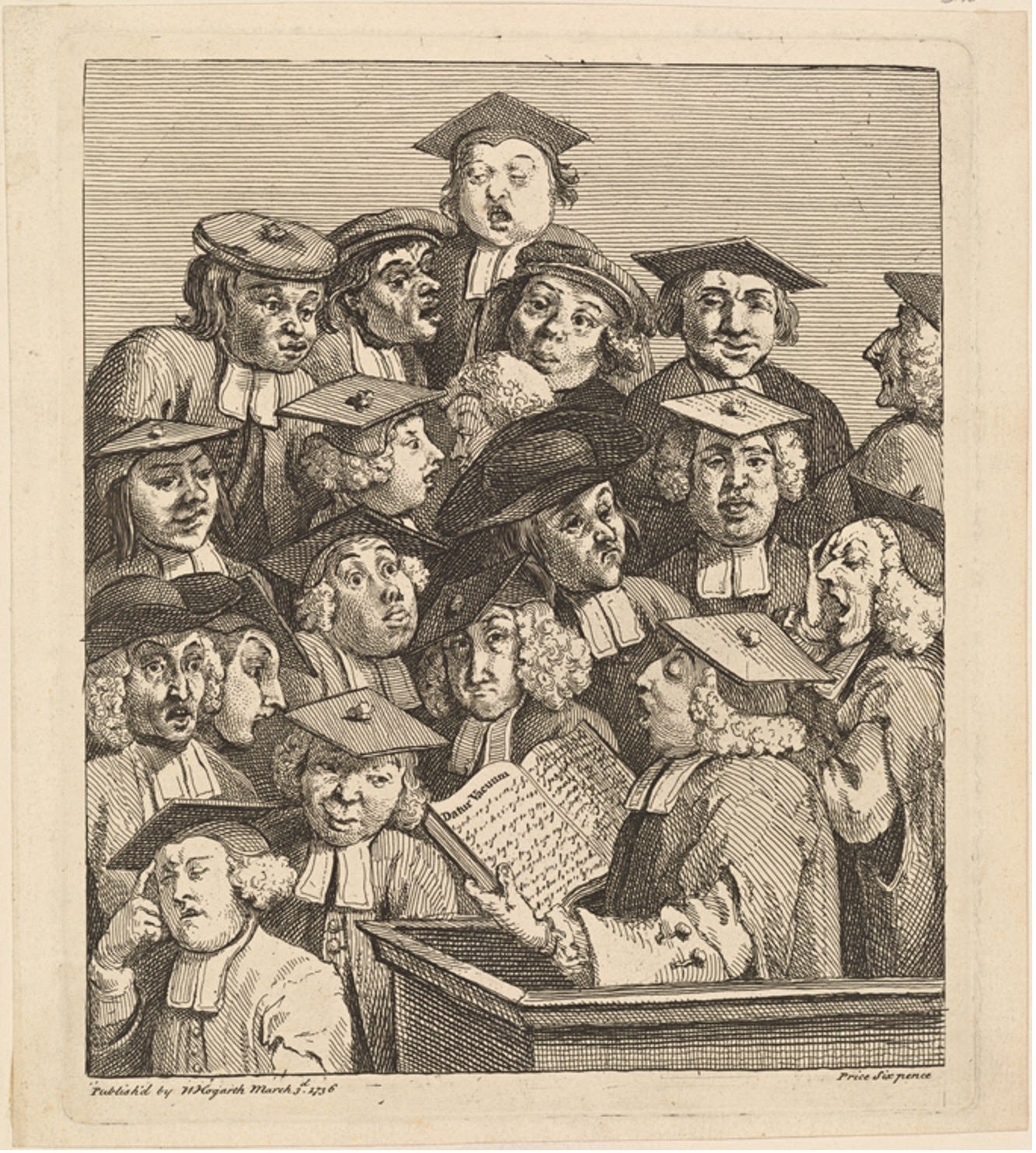“Write me an essay about the pros and cons of generative AI in education”
Why student AI generated content feels like junk food
Meat Testing, Carl Mydans, 1935 - Library of Congress public domain
As a professor, it is one of my core responsibilities to convey knowledge and feel confident that my teaching was accurately received by my students. I want them to grapple with uncertainty and challenge, which is why I prefer a messy iteration that eventually arrives from a student’s hard-fought understanding of a difficult concept over the slick perfection of neatly constructed sentences and clever presentation of the content from generative AI. It’s through this struggle to learn that we not only convey knowledge, but we also build the character of our students.
~~~It is the sound of a student’s brain “clicking” on a complex concept that gives me joy, not only because I feel like I have succeeded as a teacher, but because I see the unmistakable satisfaction that comes from a learner when they finally “get it.” ~~~
Teachers have a raft of tools to check for understanding, the exam or quiz being the classic, but these tests tend to probe for a student’s capacity for using deductive logic to find the answer hidden within distractors. In lieu of multiple-choice tests, we have traditionally depended upon essays and written discussion posts for students to demonstrate that knowledge (Blue book sales are on the rise, heralding the return of the in-class essay). Most faculty have a mixed relationship with grading essays – they are a chore, to be sure, but it is exactly here that we get to witness one of the greatest satisfactions of teaching, which is to see a student struggle to understand, sometimes to briefly fail, but ultimately to succeed in learning. It is the sound of a student’s brain “clicking” on a complex concept that gives me joy, not only because I feel like I have succeeded as a teacher, but because I see the unmistakable satisfaction that comes from a learner when they finally “get it.”
Scholars at a lecture, 1736, NY Public library public domain
It is this palpable sense of satisfaction that comes at the end of struggling and learning that generative AI is stealing from learners. When the product of learning is more important than the process, as generative AI encourages, we have lost the point of the exercise. Meghan O’Rourke, a professor of creative writing at Yale, recently wrote in the New York Times how AI simulates this mastery, giving a simulacrum of satisfaction to the student, but ultimately robs the learner of the joy of struggling with the material, organizing their own thoughts and responses, and eventually finding their way through the content to not only demonstrable understanding, but the depth of learning that comes from real understanding, and not a simply an imitation of understanding. Students, when they get to this place of deep learning, express infectious joy, as O’Rourke quotes Mary Oliver’s poem “Sometimes”
Instructions for living a life:
Pay attention.
Be Astonished.
Tell about it.
Professors of clinical skills should not be simply creating practitioners who can parrot back information but rather should be seeking to shape people who can engage with fellow humans on some of the most difficult days of their lives. I teach psychopharmacology to nurse practitioners, a complex subject requiring students to understand how drugs interact with receptors and impact cellular processes. Patient’s lives depend on getting this right.
Beyond the technical aspects of how drugs work in the body, students must also learn how to apply this knowledge to their real-world patients. Before they can do this, they must first learn the subtle skills of psychiatric evaluation, diagnosis, and treatment planning, which can be as ambiguous as anything written by Proust. Increasingly, AI has entered the sacred space between clinician and patient, providing some needed relief in the form of passive scribes, from the tedium of repetitive chart note writing (most patients would be astonished to learn that your NP, PA, or doctor spends as much time writing about your visit to see them as they did seeing you, thanks to the rapacious appetites of electronic health records to gather data that can be used in billing and to protect against the fear of a malpractice lawsuit), and this summarizing function is appreciated and welcomed by many clinicians. However, it is only a matter of time before the analytic capabilities of AI are deployed in the process of diagnosis and the decision of how to treat a malady. This may not be an altogether bad thing. Even five years ago, AI radiology diagnosis was equivalent, if not slightly superior to a human. The diagnostic capacity of AI will only improve in time. Where does that leave human clinicians?
"The good doctor" / Dalrymple, 1901 - Library of Congress public domain
However, there is more to diagnosis than a label. There is a sacred valley that the clinician and patient walk across together between complaint and the treatment that follows, and that valley is deeply human. While AI can pretend to be empathic, its sycophancy can be, at best, cloying and distracting, like giving saccharine to a diabetic person with hypoglycemia when they need sugar; a vapid, AI-generated response will never replicate a human clinician before you who struggled to learn, and from that struggle, emerges more deeply human and empathic. While it may seem inconsequential if a student uses AI to simulate an understanding of a complex biological process or if they struggle, re-reading and researching a text until they archive that satisfying “click” of understanding, I believe that character is built by that struggle, and that character informs the humanity of the future clinician.
~~~Real learning is messy, imperfect, and iterative. It is not the perfectly plated restaurant meal. It is the stack of irregular and half-cooked pancakes that your 8-year-old makes by himself and brings you on Father’s Day.~~~
To be clear, I am not a Luddite. I am not the librarian in 1990 mourning the death of the card catalog. I do believe that generative AI can help students explore topics and to provide top-level understanding, and to this end, it has utility. We need to teach students how to use it as a survey and clarification tool, rather than a substitute for real understanding. Real learning is messy, imperfect, and iterative. It is not the perfectly plated restaurant meal. It is the stack of irregular and half-cooked pancakes that your 8-year-old makes by himself and brings you on Father’s Day. As teachers, we must praise process and steady progress over perfection, because we’re not just shaping learners, we’re shaping people, and the way we do that is consequential.







Superb essay! Facts and information are valuable. But they are easily misused. What is so desperately needed in addition to vast amounts of information and even knowledge is wisdom. That is the deeply human quality that, as a master clinician,teacher, and mentor, that Andrew brings to us. A real treasure!